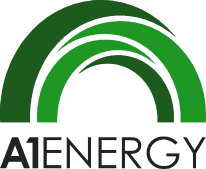
In today's business world, energy costs are a significant expense for many organizations. Thankfully, there are many energy management practices that businesses can implement to help control these costs. In this blog post, we'll explore some of the most effective energy management strategies.
It is important to establish the use case for energy management in order to identify how and why energy is used. By building a team of internal stakeholders, setting energy goals and targets, creating an energy roadmap and scorecards, and benchmarking all energy projects or energy savings initiatives, it is possible to create a more efficient use of energy.
Control Energy Costs Through Energy Efficiency
Businesses today are under more pressure than ever to control costs and improve profits. One area where businesses can make a big impact is energy efficiency. By making some simple changes, businesses can save money on energy costs while also reducing their environmental impact.
There are a number of ways businesses can increase energy efficiency. One is to retrofit existing buildings with energy-efficient products and technologies, such as LED lighting and lighting controls. Energy efficiency projects are a capital expense, however the upfront costs can be offset by lucrative utility rebates, state or federal incentives such as grants or tax credits, or energy efficiency financing programs. Another is to change the way you operate, such as simply turning off lights and equipment when not in use all the way to shifting operational schedules to times of the day when energy costs are less expensive (more on this later). Making these changes can be a challenge, but the potential savings are significant. And as energy costs continue to rise in today's environment, energy efficiency will become even more important for businesses of all sizes.
Optimize Energy Procurement Contracts to Control Energy Costs
As businesses strive to control costs, how you buy your energy supply has become an increasingly important area of focus. There are a number of ways to optimize energy procurement contracts to help control energy costs. Let's explore some of the most effective strategies.
One of the most important things to consider when negotiating energy contracts is the market price of electricity. This is because the supply price will have a major impact on the overall cost of energy. By understanding the market and negotiating favorable terms, businesses can save a significant amount of money on their energy costs.
Another important factor to consider when negotiating energy contracts is the length of the contract. shorter contracts tend to be more expensive, but they also offer more flexibility. This is because businesses can take advantage of lower prices when they are available, without being locked into a long-term contract. It is critically important to understand and know the current and future pricing.
Businesses should also consider the type of energy contract. There are some different types of energy contracts, namely fixed priced energy contracts and block and index energy contracts, each with its own benefits and drawbacks. By understanding the differences between these types of contracts, businesses can more effectively negotiate favorable terms.
As businesses strive to control energy costs, energy procurement contracts have become more important. In order to optimize these contracts and achieve cost savings, it is important to understand the various factors that go into them.
Factors to consider when negotiating energy procurement contracts include:
- The current and future price of the commodity
- The optimal term of the contract
- The best contract structure and the time of contract execution
By taking all of these factors into account, businesses can negotiate energy procurement contracts that are more favorable and that can help them control their energy costs.
Onsite Energy Generation With Solar PV to Control Energy Costs
As the price of energy continues to increase, making it more important than ever for businesses to control their energy costs. Onsite energy generation with solar PV is one way to do this. Solar PV systems can provide a significant portion of a business’s energy needs, resulting in lower energy bills, increased energy independence, and a hedge against future price volatility.
There are a number of factors to consider when deciding if onsite energy generation with solar PV is right for your business. This includes the size and location of your business, your energy needs, and your budget. A solar PV system is a significant investment, so it’s important to make sure it is the right decision for your business.
Peak Shaving With Batteries or Generator, or Both
If you are considering implementing a backup battery or generator for your business, you may be wondering what the benefits are. Energy peak shaving is one of the main benefits of having a backup power source.
Peak shaving is the process of reducing your energy consumption during times of high demand. This can help you avoid high energy bills, as well as reduce the strain on the grid. Battery backup or generator can help you shave off the peaks of your energy consumption, and save money in the process.
If you are interested in reducing your energy consumption and saving money, peak shaving with a backup battery or generator is a great option to consider.
In conclusion, energy management practices can help you control your energy costs. By scheduling a call with an energy management consultant from A1 Energy, you can develop a plan that will help you save money on your energy bill.
